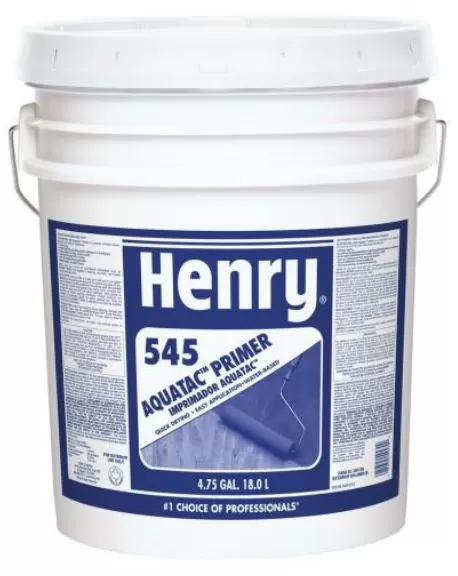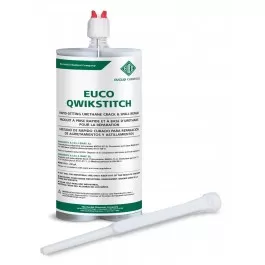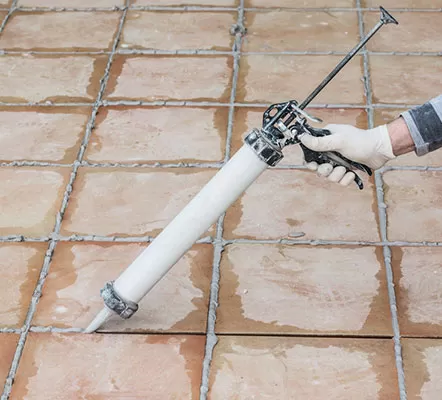Blog
What’s The Best Waterproof Caulk You Should Use?
Caulking is an important part of maintaining and protecting your home. It is essential to sealing and weatherproofs your home against moisture and other environmental elements. But with so many types of caulk on the market, knowing the best waterproof caulk for your needs can be difficult. This blog will discuss the various types of caulk and how to choose the best waterproof caulk for your project.
What Is Caulk?
Caulk is a flexible material that seals gaps and cracks between two surfaces. It is typically made of silicone, acrylic, latex, or polyurethane and is applied to the surfaces with a caulk gun. Caulk prevents moisture and air leaks in various applications, including windows, doors, siding, trim, baseboards, and bathrooms.
Types of Caulks
Acrylic: Acrylic caulk is an economical and easy-to-use option for sealing gaps and cracks. It adheres to most surfaces and is paintable, making it a great choice for interior and exterior projects. It is also water-resistant but is not ideal for areas that are continually exposed to water, as it can become brittle over time.
- Silicone: Silicone caulk is an excellent option for areas continually exposed to moisture and water, such as bathrooms and kitchens. It is waterproof, mold-resistant, and remains flexible over time. However, it is challenging to paint and can be more expensive than other types of caulks.
- Butyl: This type of caulk has exceptional adhesion to metal, wood, brick, glass, and more. Hence, it is ideal for insulated glass, ducts, and plumbing applications.
- Polyurethane: Polyurethane caulk is suitable for interior and exterior projects. It is waterproof, flexible, and adheres to most surfaces. It is also paintable and remains flexible over time. However, it is more expensive than other types of caulks and can be tricky to apply.
Factors to Consider When Choosing a Caulk
Regarding completing DIY projects around the home, caulking is one of the most popular and effective ways to seal gaps and cracks. But not all caulks are created equal. Choosing the best one for your project is vital with a wide variety of caulks available on the market.
Here are some factors to consider when selecting the right caulk for your needs:
- Location: The project’s location is the most crucial factor to consider when selecting a caulk. Different caulks are designed for specific applications, so choosing the right one for the job is critical. For instance, if you’re caulking around a window or door, you’ll want a caulk designed for outdoor use.
- Durability: Another essential factor to consider is the caulk’s durability. You’ll want to select a caulk that will last for years in the elements and stand up to the wear and tear of daily use. Look for a caulk that is UV, water, and mildew resistant.
- Flexibility: The flexibility of the caulk is also essential. Some caulks are designed to be more flexible than others, which can benefit certain applications. For instance, if you’re caulking around a pipe or other moving part, you’ll want to select a caulk that can move and flex with the pipe.
- Adhesion: The adhesion of the caulk is also essential. You’ll want to select a caulk that will adhere to your caulking surface and stay in place. Look for a caulk designed to bond to various surfaces, including wood, metal, tile, and stone.
- Color: The color of the caulk is another factor to consider. Many caulks come in various colors, so you can easily find one that matches the color of your project. This is especially important when caulking around windows and doors, where the caulk should seamlessly blend in with the frame.
How to Apply Caulk
Caulking is an integral part of home maintenance. From sealing windows and doors to preventing water damage, caulking can help keep your home safe and sound. However, applying caulk can be tricky, and getting a good, even seal requires some skill and knowledge.
Here are a few tips to help you apply caulk like a pro:
- Choose the Right Caulk: Different surfaces require different types of caulks, so be sure to read the label and choose the caulking that best suits your needs. For example, silicone caulk is good for wet areas, like bathrooms, while acrylic latex caulk is better for dry areas, like windows and door frames.
- Prepare the Surface: Before applying the caulk, ensure the surface is clean and dry and remove any loose debris or old caulk. This will help the caulk adhere better and provide a better seal.
- Cut the Tip: Snip the end of the caulk tube at a 45-degree angle, and make sure the opening is the right size for the job. Too small and the caulk won’t flow, and too large and you’ll have a mess. A utility knife can help you make a clean cut.
- Apply Evenly: Apply the caulk in a continuous, even line. Don’t pause or stop, as this can cause the caulk to separate and create gaps in the seal.




